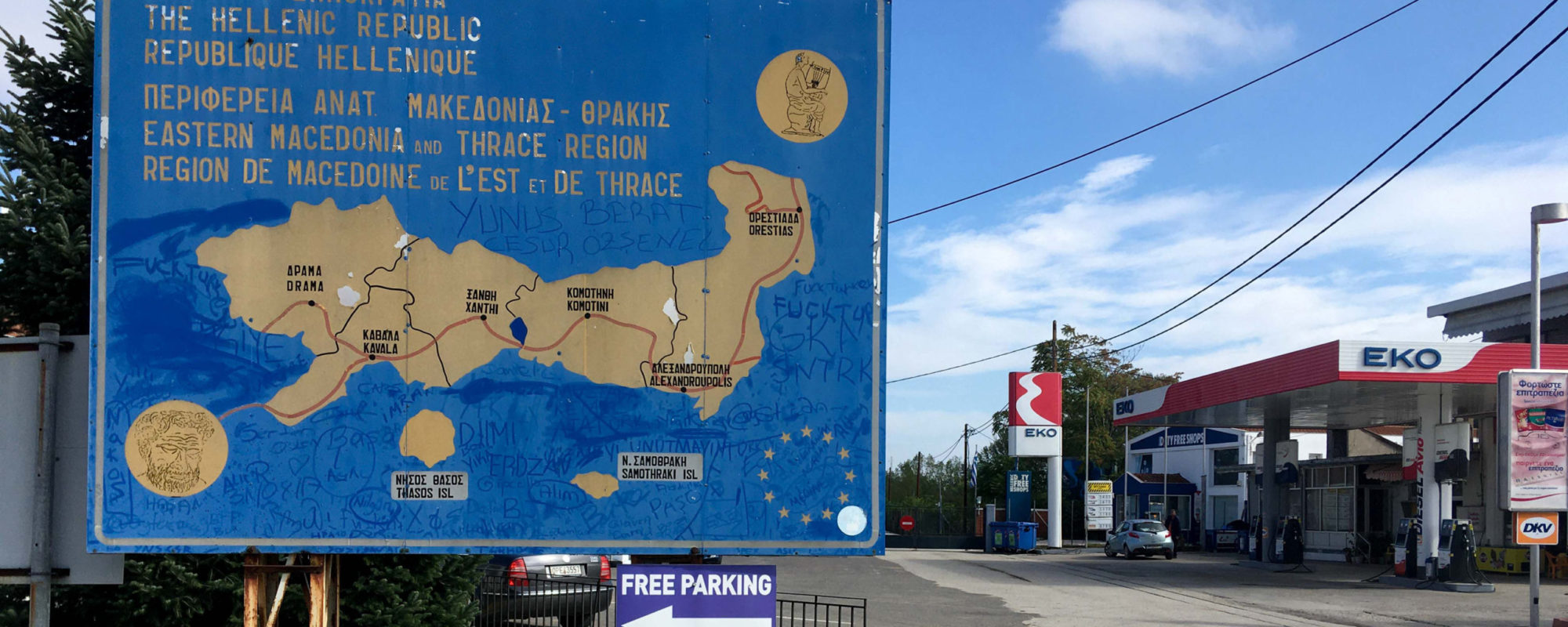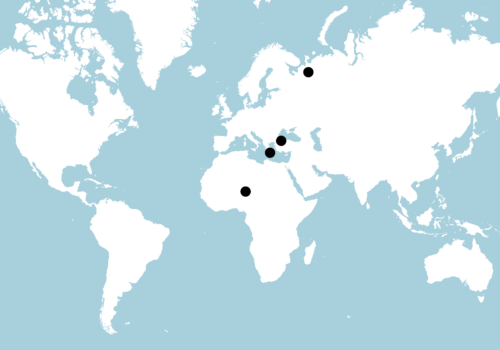ALEXANDROUPOLI, Greece — Insects splattered my windshield like rain as I drove east from Thessaloniki, this country’s second-largest city, toward my new home in the prefecture of Evros, part of the region at the northeastern end of the Greek mainland known as Thrace.
Greek or Western Thrace comprises 11 percent of the wider historical region of Thrace, which extended into southern Bulgaria and European Turkey. There were no borders separating the region until the late 19th century.
But Thrace’s modern borders are engraved onto the landscape, a constant reminder that you are living on the country’s edge. Speeding along Via Egnatia, the 670-kilometer motorway that traverses northern Greece, I was glad to see the familiar landmarks of Thracian territory: the Rhodope Mountains rising from the plain on my left, separating Greece from Bulgaria, and the sun glinting off the Aegean Sea to my right.
Two hours after leaving Thessaloniki, I crossed the snaking Nestos River, the western boundary of Thrace since Phillip II of Macedon, father of Alexander the Great, conquered the region in 400-300 BCE. Ahead of me lay the prefectures of Xanthi and Rhodope and then, finally, my destination.
Entering a tunnel drilled into a mountain, I noticed a blue-and-white Greek flag painted on the rocks above, a clear sign of the Thracians’ pride in their Greek identity.
The huge banner seemed like a response to a strange encounter I had had at the Hellenic post office in downtown Athens the day before. When I told the well-dressed young woman at the service counter that I wanted to ship a box of books to Alexandroupoli, the capital of Evros, she turned to her colleague to ask, “Do we ship packages there?” The question threw me, even though it seemed representative of Athenian attitudes toward what is perceived as a far-off and isolated region.
During the Cold War, when Thrace bordered communist Bulgaria, the prefecture of Evros was seen as a place of exile, a sort of buffer zone, abandoned and neglected at the foot of the Iron Curtain. “I will send you to Evros!” Greek government leaders routinely threatened underperforming civil servants.
Today, the stigma of that old threat remains. Evros is still largely rural and economically underdeveloped, contributing about 26 percent to the GDP of Eastern Macedonia and Thrace and 1 percent to Greece’s total GDP. Agriculture is the most important economic activity in the region, employing one in three workers, who grow wheat and barley, cotton, sesame, sunflowers, corn and lavender. Approximately one in four is employed in the civil service or military.[1]
In recent years, the region has also gained notoriety due to the migration crisis. Evros made world headlines early last year when Turkish President Recep Tayyip Erdogan directed thousands of migrants seeking asylum in Europe to the Greek-Turkish land border. The Hellenic armed forces maintain a large footprint in the region, so most Greek men know Evros from their compulsory military service. It’s a place many Athenians would rather not be assigned.
But for me, living in Evros’s capital Alexandroupoli presents a unique opportunity to experience one of the last, untouched parts of Greece, a culturally diverse region in a strategic geographic location few Greeks and even fewer Americans know well.
As the inaugural Stavros Niarchos Foundation Fellow at the Institute of Current World Affairs, I am looking forward to spending the next two years living along Greece’s borders, befriending locals and learning how the cultural and geopolitical transformations on Greece’s periphery are affecting their lives and shaping the story of the nation. My journey will take me to three border regions: Evros in Thrace, the northeastern Aegean island of Chios and western Crete.
I first came to Greece in 2016 on a Fulbright fellowship to study Greek mythology. Since then, I have worked with Greek NGOs, museums, universities and agricultural programs in Athens and Thessaloniki, the country’s two largest cities. I’ve also traveled extensively within Greece and have had the opportunity to experience the diversity of its landscapes, culture and people. But my day-to-day experience has been largely urban, and I’ve longed to spend time immersing myself in the life of Greek villages and islands.
My most recent position as speechwriter for the US Embassy in Athens stoked my interest in developments along Greece’s periphery. Over two and a half years, I helped successive US administrations deepen diplomatic relations with Greece as the country emerged from its decade-long financial crisis and assumed a larger leadership role in the eastern Mediterranean and western Balkans.
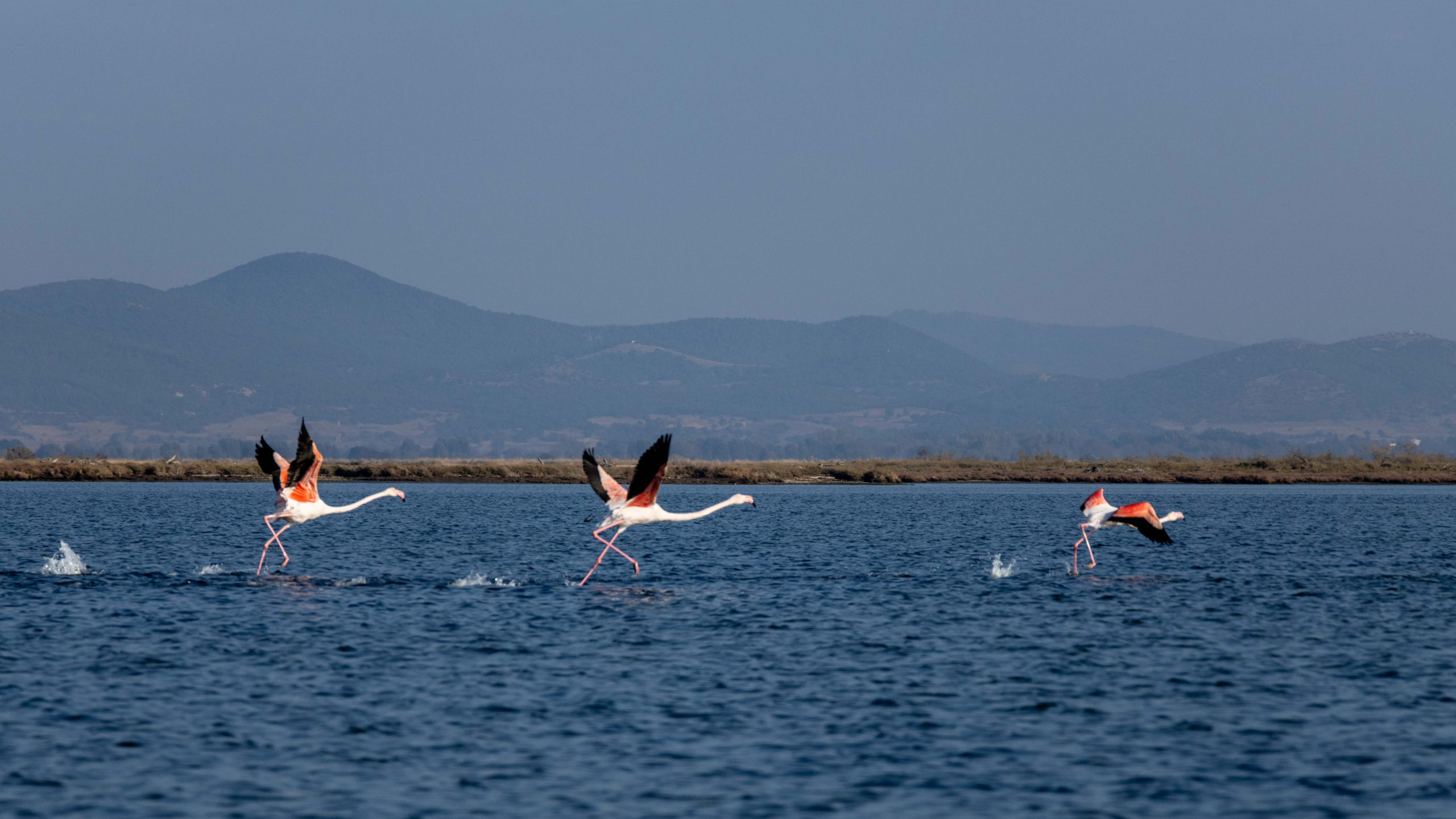
Writing frequently about Evros—particularly a US Army-funded project to remove a sunken dredger from the port of Alexandroupoli, increased military exercises and growing investment in Alexandroupoli-based energy projects like the Floating Storage Regassification Unit—motivated me to leave my desk in Athens and experience this region firsthand. My research aims to capture the perspectives of Greeks living along the borders and describe Greece’s role in the larger world.
A few weeks ago, the United States and Greece extended the duration of their Mutual Defense Cooperation Agreement (MDCA) to five years, enabling the United States to expand its defensive footprint and investments in areas of strategic importance like the Evros border and the port of Alexandroupoli. Together with the third US-Greek Strategic Dialogue, which included high-level discussions on border security and regional energy cooperation, the United States’ demonstrated interest in Evros as a logistical center offers hope for revitalizing the region’s underweight economy.
To examine how such international developments will affect the culture and livelihoods of people in Evros, I decided to launch my fellowship in Alexandroupoli.
Road Trips with Yiayiá
Over the past month, I have made frequent trips to the villages of northern Evros with Angela Giannakidou, president of the Ethnological Museum of Thrace. A small, lion-hearted woman with an infectious laugh and a distinctive sense of style, she is known as Ms. Angela by those who work with her, and I’ve adopted that form of address as well.[2]
Raised in Thessaloniki, Ms. Angela moved to Alexandroupoli with her husband Polychronis in 1967. She has dedicated over half a century to studying and championing Thracian culture. She wears necklaces with large filigree pendants and colorful scarves that have either been gathered from her travels around the world or handmade by Thracian craftspeople. She has written books about Thracian embroidery and designed clothing for Zeus+Dione, the high-end women’s brand belonging to Mareva Mitsotakis, the prime minister’s wife. Respected by villagers, academics, artisans and community leaders throughout the region, her name opens doors.
The first time we traveled together to the village of Ptelea near the Bulgarian border, I met Makrina “Mina” Tsagiannidou, the museum curator, in front of the museum, a neoclassical stone mansion in the center of Alexandroupoli. With its stately, Tuscan-style columns and gothic windows, the building, constructed in 1899, is one of the few remaining examples of architecture from the city’s birth in the 1870s.
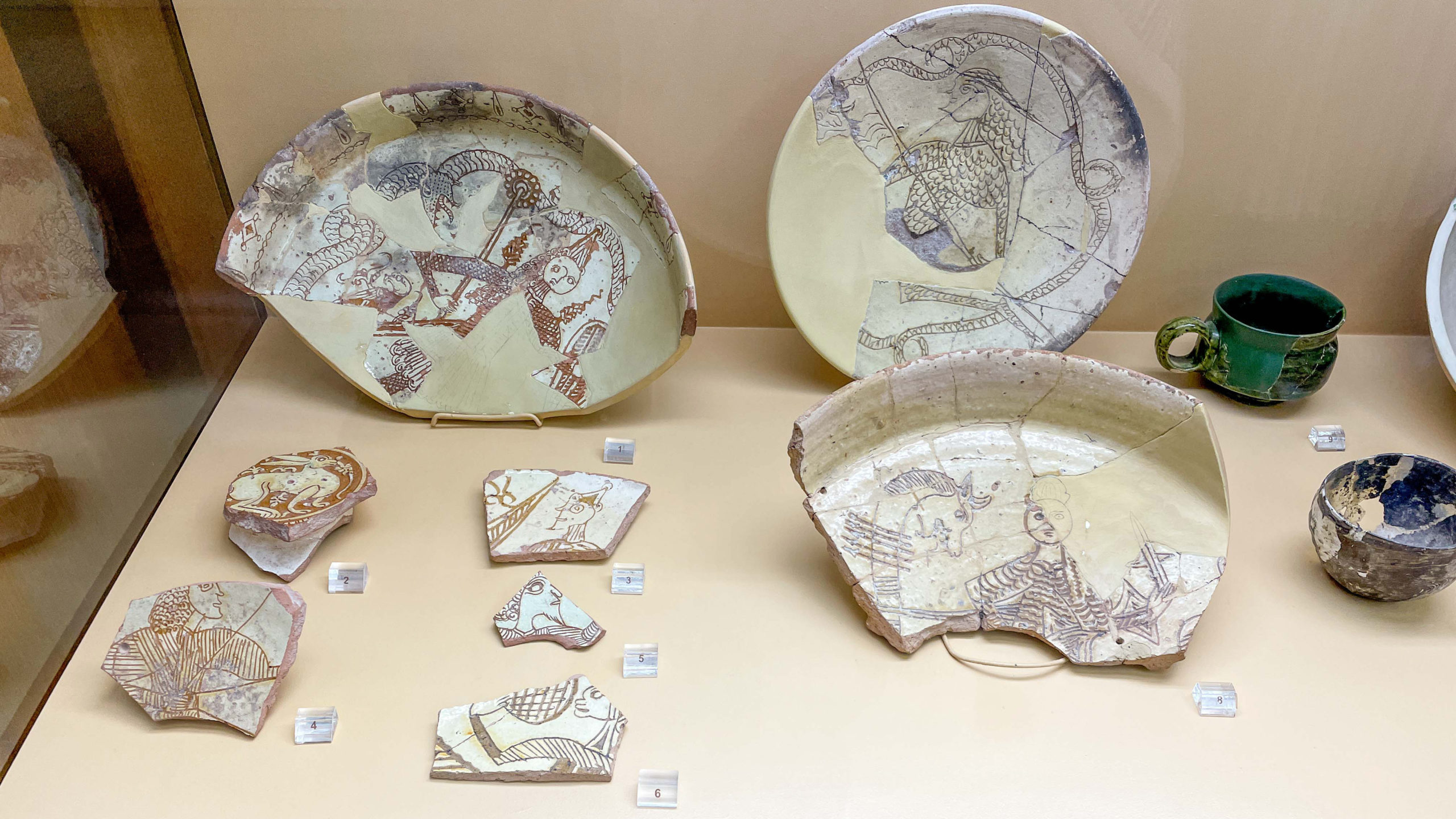
“You should have dressed more comfortably!” Mina said, in what sounded like Russian-accented English. She was wearing a hooded sweater, leggings and sneakers, and she’d brought a laptop to catalogue items from the folklore museum in Ptelea. Mina’s family hails from Cappadocia, and she is currently working on a master’s thesis about the gastronomical traditions of Thrace.
A few minutes later, Ms. Angela pulled up in a light blue Fiat. She’d hardly slept, she told us. The day before, she had been in Pomakochoria, the villages north of Xanthi inhabited by Turko-Slavic-speaking Muslims known as Pomaks. The Pomaks are part of the Muslim minority of Thrace which, according to 2011 census data, numbers approximately 140,000 people.
Mina got into the front seat and I sat in back, where one of the doors mysteriously had the child safety lock engaged. Ms. Angela drove slowly, squinting into the morning sun. The cotton harvest was underway, and cotton was strewn on the roadsides like fallen snow. “Open the door for the baby,” she cackled when we stopped in the town of Orestiada to get coffee. “Today you’re going on an adventure with yiayiá,” or grandmother.
The Ethnological Museum of Thrace, which celebrated its 19th anniversary last month, embodies Ms. Angela’s life’s work and serves as a hub for her many projects. It also functions as a cultural center and perhaps the strongest link between Alexandroupoli and the northern villages.
“I work in Alexandroupoli, but I live in the villages,” she said. “This is where the spirit and tradition is, close to the land, where you can feel the seasons pass with each harvest.” She drove with one hand on the wheel and the other on her phone, which buzzed incessantly. Pomak women sent embroidery samples for her approval; the community president called to confirm our arrival time in the village; municipal advisers rang to follow up on cultural collaborations; her husband, sister and children called to check in.
“On Ms. Angela’s phone, you never know who’s going to call,” Mina said. “It could be the prime minister.” That was no exaggeration, as both Prime Minister Kyriakos Mitsotakis and President Katerina Sakellaropoulou had recently visited the museum. At last, Mina managed to convince Ms. Angela to pull over and let her take the wheel so she could respond to her growing queue of calls and messages.
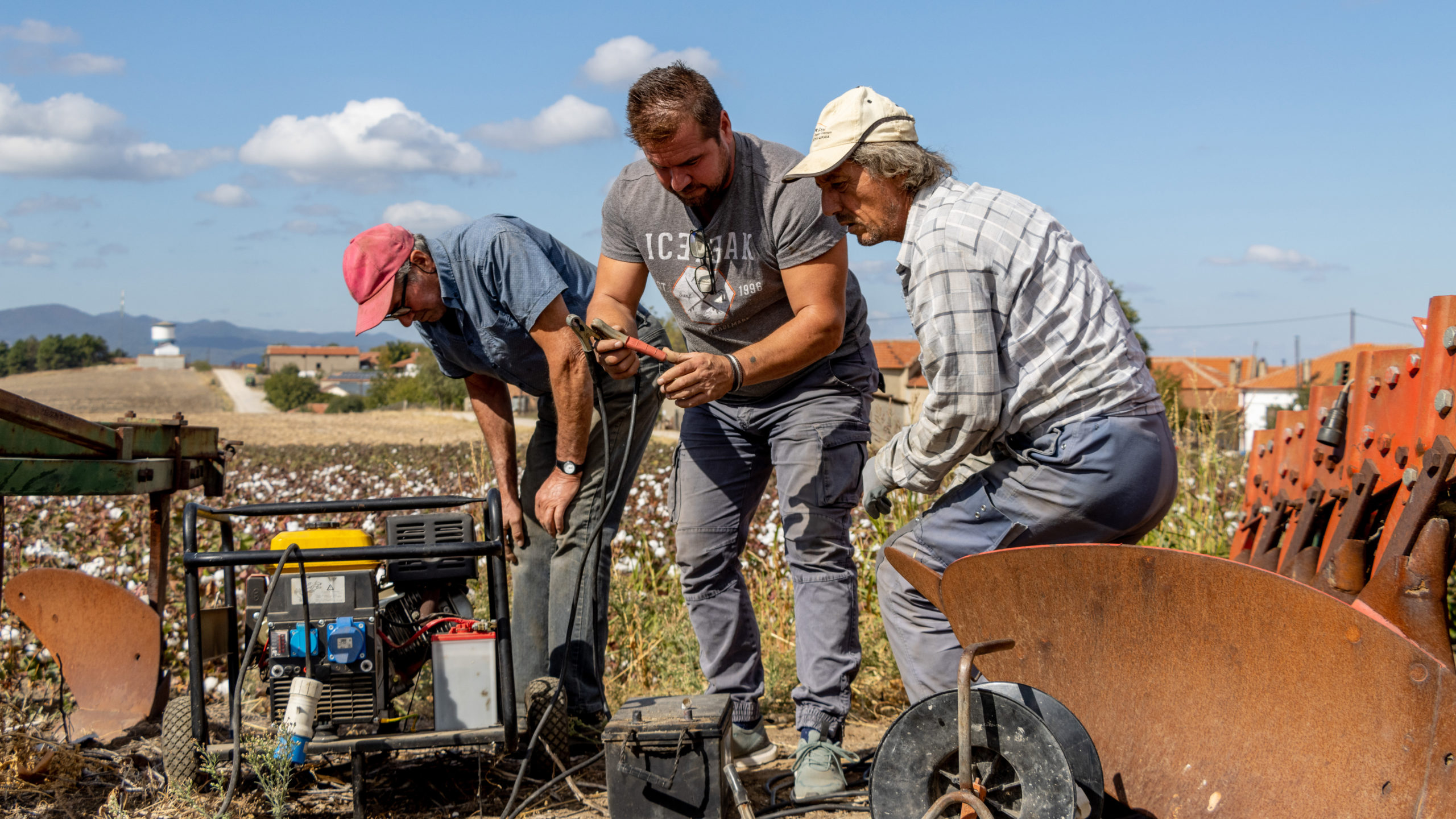
A tractor-trailer shot by, rocking our small car. Clouds hung low in the blue sky, and I gazed over the flat expanse of farmland to the green line of trees demarcating the Evros River, the border between Greece and Turkey.
“People think of the border as an insult, but it’s actually a source of pride for the people here,” Ms. Angela said. The residents of Thrace still feel a Byzantine sense of duty as akrítes, or guardians of the border. The most famous was the legendary Digenes Akritas, the “two-blood border lord,” hero of a Byzantine epic poem by the same name. It details Digenes Akritas’ mixed Cappadocian Greek and Arab parentage, and his adventures defending the Byzantine Empire’s frontiers from foreign invaders. The word akrítes comes from the Greek word ákri, which means “end, limit, border, extremity,” and I often hear locals use it to refer to themselves and their region.
“The border, I think, is the soul of Thrace,” Ms. Angela said. “Borders are important: the border with another, which separates but at the same time invites you to cross it. You must always be aware of it, for it must be maintained. The border is the beginning, it creates identity. If you don’t know the other, you can’t know yourself.”
Her words brought to mind lines from the poet Anne Carson’s philosophical-literary text, Eros the Bittersweet, which explores how ancient Greeks understood the concept of eros. “Eros is an issue of boundaries. He exists because certain boundaries do,” Carson writes. “When I desire you a part of me is gone: my want of you partakes of me. So reasons the lover at the edge of eros. The presence of want awakens in him nostalgia for wholeness.”[3]
Thrace is a region nostalgic for wholeness. “The Great Powers divided Thrace in order to weaken it,” Ms. Angela said. “You know, divide and conquer!” In the turbulent period following the collapse of the Ottoman Empire, many Thracians were forced to leave their homes and migrate across newly created national borders. Longing to return home motivated some refugees—like those from Bulgaria who settled the Greek villages of Ptelea and nearby Ormenio—to remain as close as possible to the border.
It’s not just longing for a unified past that afflicts Evros but also anxiety about the future. In northern Evros, we drove on rutted roads through fields freshly stripped of cotton, empty villages and graying towns. Often the villages we visited seemed inhabited only by stray cats and dogs.
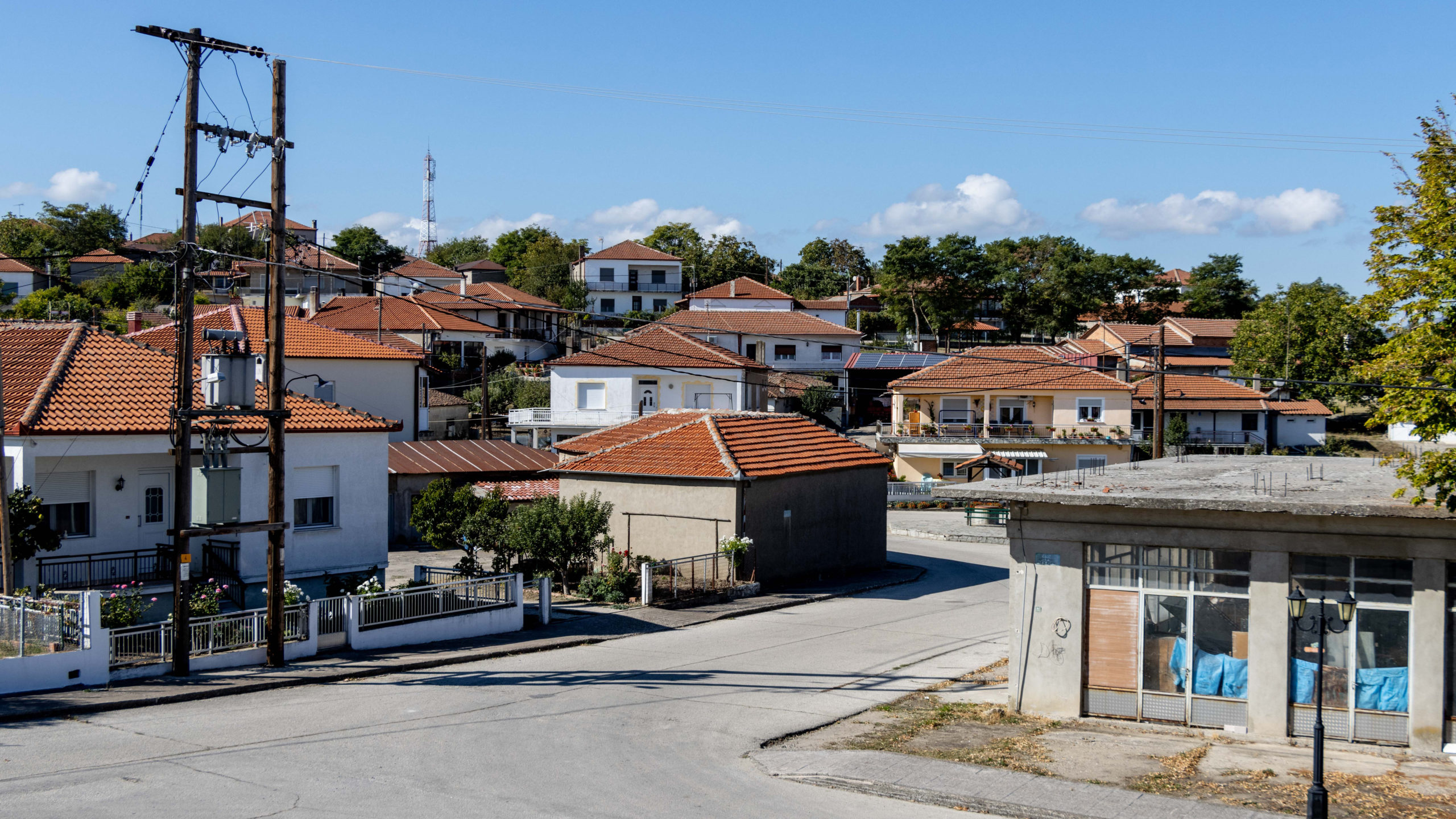
Villages like Ormenio are increasingly isolated, overrun with weeds and rusting “For Sale” signs. Their residents have left in successive waves to seek economic opportunities abroad. An entire generation emigrated from Ptelea and Ormenio to Stuttgart, Germany in the late 1950s to work in factories there. A second wave left in the 1980s and a third in the 2010s as a result of Greece’s debt crisis. Today, many Thracians have friends and relatives in Stuttgart; entire communities have been transplanted abroad.
In 1991, Ormenio had 950 permanent residents. Now, there are fewer than 300. Few children are born in the village, and its school has closed; most of the remaining inhabitants are over 70 years old. Trains used to run frequently between Ormenio and Alexandroupoli, but now only one arrives per day, which does not suit anyone. Chrysoula Ioannidou, the village’s former community president, told me, “Every now and then, we say goodbye to relatives and friends who emigrate to the Lord. Our emigrants no longer return. They used to come for weddings and baptisms. Now some come for funerals and memorials, if at all.”
Sometimes Ms. Angela will ask me to stop in a desolate square and imagine it full of life: tables piled high with meat and pies, children laughing and chasing each other, people singing and dancing to the twang of an oud. She and her husband Polychronis got married in his village of Petrades when she was 20 years old, and she used to spend all day walking from village to village, surveying land for housing plots. I imagine what it must be like for her to have known these villages when they were vibrant and thriving, and watch them slowly become ghost towns.
“It makes me very sad what’s happening in Evros,” Ms. Angela told me. “I feel like I’m following the funeral procession of Thrace’s culture. I have to try to do something.” She pays out of pocket to cover the museum’s operating expenses, which include rent, utilities, and her employees’ salaries and insurance. Last year, she launched Riza, a new line of clothing and home goods, in collaboration with Thracian blacksmiths, weavers and carpenters. This month, she traveled to Athens to pitch Thrace as a destination for tourism companies, and she is developing a network of thematic museums in Ptelea and three other villages that would serve as stops on a cultural itinerary of the region.
But it’s often an uphill battle to convince aging villagers to invest the work needed to keep their traditions alive. During our visit to Ptelea, Ms. Angela met with members of a women’s group to pitch her idea of bringing tourists to the village and ask if they could create embroideries to sell as souvenirs. Many were hesitant to commit, citing their age and the difficulty of weaving traditional designs. “But you’re young compared to the women in other villages!” Mina told them. Many preferred to spend their free time watching television or on Facebook.
“I must be crazy to pay to work nonstop for Thrace,” Ms. Angela said. “So much work! This week, I’ve been working every day since three in the morning. I think I was born in the wrong time. All people care about nowadays is money, money, money.”
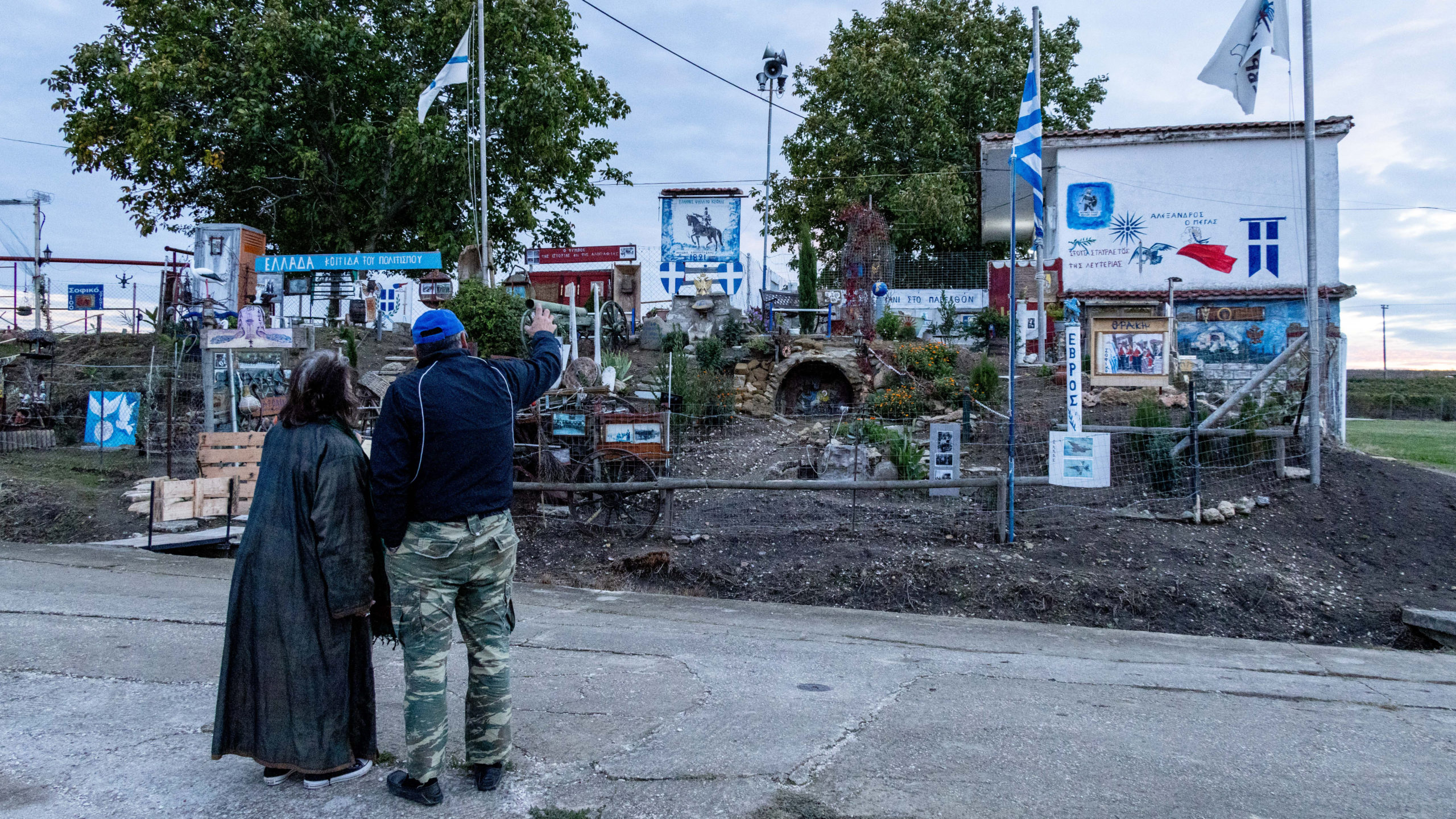
Even if Ms. Angela succeeds in bringing tourists to northern Evros, larger questions would remain: What are the economic incentives for people to return to these villages? How do you inspire the sort of sustainable renewal this region needs to thrive organically?
Ms. Angela hopes recent geopolitical and economic developments will help bring this overlooked corner of Greece back into the spotlight. “It’s time for Thrace,” she told me. After a decade of economic crisis, Athens is beginning to look outward once more and strengthening its role in the region. And as last month’s Strategic Dialogue indicates, the United States and other powers are interested in the region as well. By taking advantage of new energy and transportation networks and developing its wealth of natural resources, Thrace has an opportunity to regain its historical role as gateway to the East.
Mr. Spyros’s Garden
The sun had already set, but Spyros Ouzounakis, a 65-year-old farmer and painter from Sofiko, wanted to show us something on the outskirts of the village. Driving behind him, Ms. Angela and I followed his truck away from the multipurpose space where she had just met with 20 women and shared her plan to bring tourist companies from Athens to Evros.
In the dimming light, we couldn’t believe our eyes. Beside a basketball court and a soccer field stood a monument to Greek culture, Evros and Sofiko, an eclectic garden of Greek symbols and iconography. Three flags flew over the site: the blue cross of the Greek Revolution, the modern Greek flag, and a flag he had created for Evros featuring a blue-and-white eagle carrying a sword and the outline of the region wreathed in laurels. “Greece, the birthplace of culture,” a blue-and-white sign proclaimed.
Mr. Spyros had dedicated a section of concrete wall to “The Caryatids of Sofiko,” a reference to the beautiful maiden-shaped columns that hold up part of the Erechtheion temple on the Acropolis. The wall featured black-and-white photographs of village women like his grandmother, whose memory he wanted to preserve.
He led Ms. Angela over little walkways paved with pebbles and up steps carved into the dirt. Inside a glass vitrine, he had painted a wooden icon of Jesus Christ, whose worn and sorrowful expression seemed befitting of a 1923 refugee. Here was Leonidas, king of Sparta, and Alexander the Great on his horse; here was the Hagia Sofia, Istanbul’s famous religious monument, beside the double-headed Byzantine eagle; marching Evzones with their red caps and fustanella skirts; an old canon and a white plastic stork perched atop a pole.
As a native of southern California, I was reminded of Watts Towers, the conical steel and concrete sculptures that Simon Rodia built on his property and decorated with bottles, seashells, mirrors and tiles. Here, too, was one man’s incredible, over-the-top artistic vision inspired by a fervent desire to remember.
“I want to make sure that young people in the village are aware of their history,” Mr. Spyros said. “I want them to know where they’re from.” His monument to Greek culture seemed like a bid at connection, a proud assertion, like the Greek flag painted above the tunnel on Via Egnatia, that the people of Sofiko and Evros have a claim to Greece’s past and a place in its future.
Endnotes
[1] Έκθεση αξιολόγησης και ιεράρχησης των κλάδων οικονομικής δραστηριότητας και της συνεισφοράς τους στην οικονομία του νομού Έβρου και της περιφέρειας Ανατολικής Μακεδονίας & Θράκης. ICAP Management Consultants, 2020.
[2] In Greek, which has a plural form for politeness, the use of a title plus first name denotes a combination of familiarity and respect, often for someone older.
[3] Carson, Anne. Eros the Bittersweet. Princeton, NJ: Princeton University Press, 1986.

